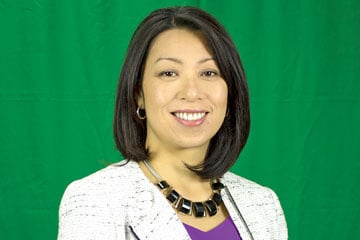
Recent changes to the threshold for motor vehicle accident claims are changing the landscape that can put parties at a disadvantage when it comes to trying to settle cases.

Recent changes to the threshold for motor vehicle accident claims are changing the landscape that can put parties at a disadvantage when it comes to trying to settle cases. At the same time, some juries, particularly those in Toronto, are assessing damages at less than the deductible, meaning that plaintiffs can walk away from court with nothing.
The Ontario government implemented changes to the Ontario Insurance Act that makes it more difficult for people to recover general damages from motor vehicle accidents than any other type of injury case.
Section 267.5 says that for a plaintiff to be entitled to general damages, they must meet a statutory threshold that the injuries must be permanent and cause a serious impairment of an important physical function.
“What they’re looking to do is limit the availability of recovery for people involved in motor vehicle accidents if the injuries are minor,” says Samantha Iturregui, partner with Kelly Santini LLP in Ottawa, who has been chosen by a national insurer as its non-threshold defence counsel for the region.
“You may be entitled to other types of damages, but you’re not entitled to general damages, which forms a really big part of any personal injury claim.”
Additionally, the government applied a deductible to claims that meet the threshold that began at $30,000, but as of Aug. 1, 2015, it increased each year with inflation, which means that it now sits just below $38,000.
To recover damages, they must be assessed at higher than the deductible.
“It became a moving target,” says Patricia Sim, managing lawyer with Grillo Barristers Personal Injury Lawyers in Toronto.
“And it moves in a direction that’s favourable to the insurance company.”
On top of that, in January 2015, the statutory interest rate of five per cent — designed to foster settlement — was reduced to 0.8 per cent.
Sim calls that a “devastating” change to the rights of accident victims, particularly since the Ontario Court of Appeal in both Cobb v. Long Estate, 2017 ONCA 717 and El-Khodr v. Lackie, 2017 ONCA 716 ruled that these changes can be applied retrospectively.
“Now, there’s no incentive for insurance companies to settle early,” says Sim.
“In fact, it makes sense for them to drag it out.”
Sim says this means that risk assessments for lawyers have changed and, in her opinion, it’s shifted unfairly for plaintiffs.
Iturregui says the way courts are interpreting the threshold cases is becoming of interest and that, in one case, Mandel v. Fakhim, 2016 ONSC 6538, the judge obtained the jury’s assessment of damages, which was so low, a mere $3,000, that he declined to make a ruling on threshold because it was moot.
“There are cases . . . in 2017 that are doing the same thing,” says Iturregui. “Some judges are following suit. They’re letting juries decide the damages, and based on what these decisions are, if they’re under the deductible, they’re not ruling on threshold.”
Iturregui says that the trend was that when there was the opportunity to find that a plaintiff met threshold, the judge would make that finding, particularly in regions outside of the GTA.
“When you look at the case law related to threshold on a province-wide basis, my impression is that it is more likely that you will be successful on a no-threshold argument if you’re in the GTA as opposed to outside of it,” says Iturregui.
Both Sim and Rose Leto, partner with Neinstein Personal Injury Lawyers LLP in Toronto, have seen lower awards from Toronto juries.
“Anecdotally, we feel that Toronto juries are tougher juries than in the suburbs,” says Leto.
Sim adds that in pre-trial, judges in Toronto will tell clients that “juries are really tough on plaintiffs these days” and they should consider an offer.
Leto says that one of the most important issues is that the jury isn’t allowed to know what the deductible is before it determines what to award for damages.
“A jury could think that they’re actually helping a plaintiff or giving a plaintiff an award when, in fact, because of the application of the deductible, they get nothing,” says Leto.
Leto says that what often happens is that lawyers will agree on a range of damages for the case, and if they do, then they will both put the same range to the jury, and a judge may echo the range.
In other cases, when the lawyers don’t agree on the range, the jury can order damages below the deductible, particularly if the ranges don’t overlap.
“Even when the amount of damages awarded net of the deductible is more than zero, you then have to compete with this formal offer to settle,” says Leto.
“Then the very serious cost consequences that follow, not beating that offer.”
Leto says it can result in cases where a plaintiff is successful and gets a sizeable amount of money, but if it’s less than the formal offer to settle, they will be liable to pay the defendant’s legal costs, which could consume that award.
Sim says the fact that the jury can’t be told what the deductible is could offend the rules of professional conduct, because a defence lawyer can suggest to the jury that it make an award that will be below the deductible knowing that it will wind up with a zero.
“They’re actively allowed to mislead a jury, which is against the rules of professional conduct,” says Sim.